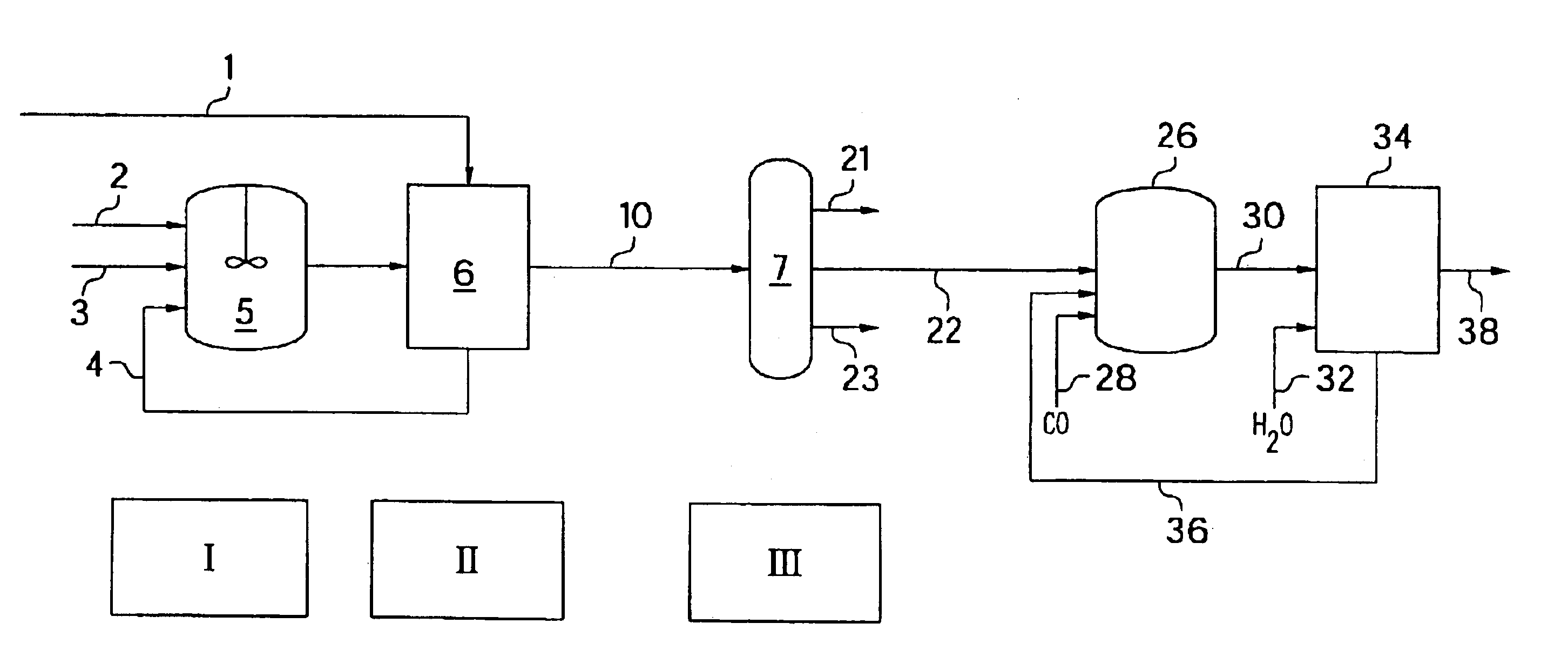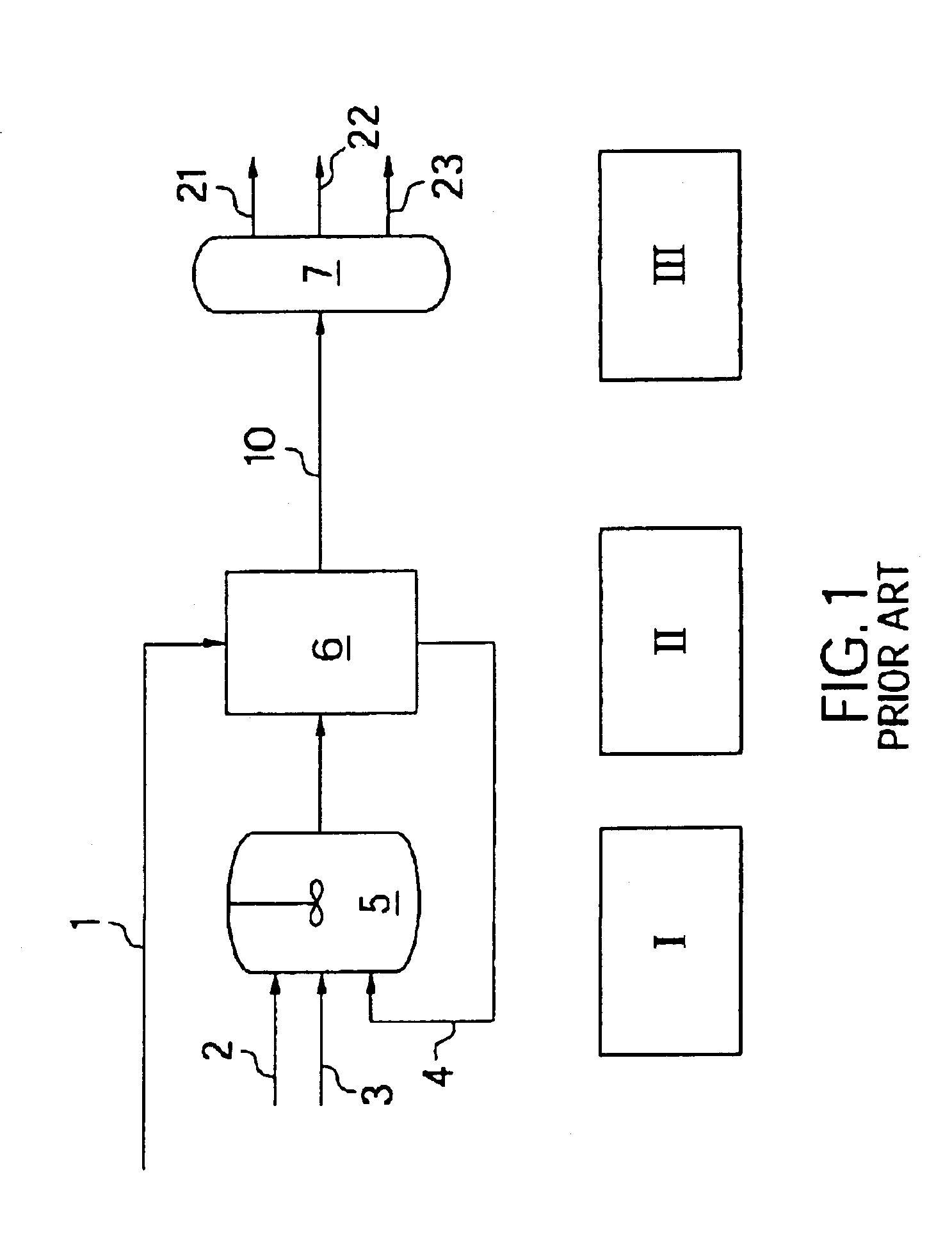Cracking of neo-C9 and neo-C13 carboxylic acids to either pivalic acid or methyl pivalate
a technology of methyl pivalate and carboxylic acid, which is applied in the preparation of carboxylic compounds, carbon monoxide reaction carboxylic preparations, organic chemistry, etc., can solve the problems of unfavorable selectivity to the desired pivalic acid product, unfavorable corrosion rate,
- Summary
- Abstract
- Description
- Claims
- Application Information
AI Technical Summary
Benefits of technology
Problems solved by technology
Method used
Image
Examples
experiment 1
[0028]The catalyst was first prepared in the 150 cc Hastelloy C autoclave as follows: water (30 g, 1.66 mol) was added with nitrogen followed by boron trifluoride (56.7 g, 0.833 mol) from a pressure / volume / temperature (PVT) vessel. Next C9-C13 carboxylic acids (23.75 g) were added with nitrogen pressure to the boron trifluoride dihydrate. The nitrogen overpressure was released and carbon monoxide (CO) was added to 1025 psi. The reaction mixture was then heated to 100° C. At 100° C., the CO pressure was adjusted to 1200 psi. The reaction mixture was heated for 2 hours then gas chromatography (gc) sampled. The reaction mixture was cooled under CO pressure and the temperature was maintained for an additional 4 hours for a total of 6 hours. The following table indicates conversion of the C9-C 13 carboxylic acids to pivalic acid after 2, 4, and 6 hours of heating respectively:
[0029]
methylpivalic2-methylC9-neoC13-neoRun Timepivalateacidbutanoic acidacidsacids(minutes)(wt. %)(wt. %)(wt. %)...
experiment 2
[0031]The second experiment was similar to the first experiment, except no gc samples were taken and the catalyst solution plus starting C9-C13 neoacids were allowed to stand in the autoclave at room temperature overnight under CO pressure prior to heating. Also, the same quantities of water and boron trifluoride dihydrate were added with one exception, i.e., 20.12 g of neo-C9-C13 acids were also added. The reaction mixture was then heated to 100° C. and the run temperature was maintained at 100° C. for 3 hours under 1200 psi CO pressure. The temperature of the reaction mixture was then lowered to room temperature and was left to stand overnight. The following day, the reaction mixture was heated back to 100° C. under CO pressure and the temperature was maintained for an additional 3 hours for a total of 6 hours. The reaction mixture was then cooled to room temperature and at room temperature the CO overpressure was released. The reaction mixture was drained from the autoclave into ...
experiment 3
[0032]The third experiment was similar to the first experiment, except the run temperature was lowered to 80° C. Also, the 6 hour heating period was accomplished in one day with gc sampling after 2, 4, and 6 hours. The following table summarizes the gc results in weight percent:
[0033]
Run Timemethylpivalic(minutes)pivalateacidC5 acidC9 acidC13 acid1200.041.260.3188.3510.042400.133.710.0486.0910.023600.115.650.3083.8210.12
[0034]FIG. 3 shows the temperature requirements to obtain high C9-13 neoacid retro-conversion to pivalic acid by plotting the percent pivalic acid in the upper phase analysis. For experiments 1, 2, and 3, boron trifluoride dihydrate catalyst was used with the best results at 100° C.
[0035]In the next series of experiments, i.e., Experiments 4-6, boron trifluoride dimethanol was used resulting in the production of methyl pivalate in commercially acceptable yields.
PUM
| Property | Measurement | Unit |
|---|---|---|
| temperature | aaaaa | aaaaa |
| temperature | aaaaa | aaaaa |
| partial pressure | aaaaa | aaaaa |
Abstract
Description
Claims
Application Information
 Login to View More
Login to View More - R&D
- Intellectual Property
- Life Sciences
- Materials
- Tech Scout
- Unparalleled Data Quality
- Higher Quality Content
- 60% Fewer Hallucinations
Browse by: Latest US Patents, China's latest patents, Technical Efficacy Thesaurus, Application Domain, Technology Topic, Popular Technical Reports.
© 2025 PatSnap. All rights reserved.Legal|Privacy policy|Modern Slavery Act Transparency Statement|Sitemap|About US| Contact US: help@patsnap.com



